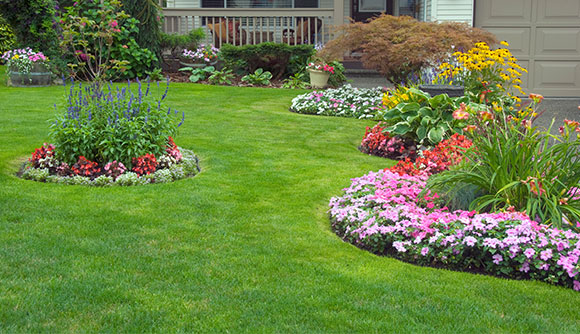Landscape design is an art form that blends creativity with functionality to create beautiful, sustainable outdoor environments. Whether it’s a residential garden, public park, or commercial property, landscape designers play a crucial role in transforming ordinary spaces into extraordinary landscapes. This comprehensive guide will explore the world of landscape designers, their roles, the design process, benefits of hiring a professional, and tips for choosing the right designer for your project.
The Role of a Landscape Designer
Landscape designers are skilled professionals who plan and create outdoor spaces. Their expertise spans horticulture, design principles, environmental science, and architecture. Here’s a closer look at what landscape designers do:
- Site Analysis: They assess the site’s existing conditions, including soil quality, climate, topography, and existing vegetation. This analysis informs the design process and ensures that the chosen plants and materials will thrive.
- Concept Development: Based on client needs and site analysis, designers develop concepts that balance aesthetics, functionality, and sustainability. They consider how the space will be used, maintenance requirements, and the overall visual impact.
- Design Planning: Detailed plans are created, including layout, plant selection, hardscapes (like patios, walkways, and walls), water features, lighting, and irrigation systems. These plans are often presented as drawings or digital models.
- Project Management: Many landscape designers oversee the implementation of their designs, coordinating with contractors, suppliers, and other professionals to ensure the project is executed according to plan.
- Sustainability Practices: They incorporate eco-friendly practices such as using native plants, sustainable materials, and efficient water management systems to create environmentally responsible designs.
The Landscape Design Process
The landscape design process typically involves several key steps:
- Initial Consultation: The process begins with an initial consultation between the designer and the client. This meeting helps establish the client’s vision, needs, budget, and timeline.
- Site Analysis and Survey: The designer visits the site to conduct a thorough analysis. This includes assessing existing features, taking measurements, and identifying any challenges or opportunities.
- Conceptual Design: Based on the site analysis and client input, the designer creates a conceptual design. This includes rough sketches or digital models that illustrate the overall layout and main features of the proposed landscape.
- Design Development: Once the concept is approved, the designer develops detailed plans. This stage involves selecting plants, materials, and other elements. It also includes creating construction documents and specifications.
- Implementation and Installation: The designer may oversee the installation process, working with contractors and suppliers to ensure the design is implemented correctly. This includes managing timelines, budgets, and quality control.
- Maintenance Planning: After installation, the designer may provide maintenance plans to ensure the landscape remains healthy and vibrant. This includes guidance on watering, pruning, fertilizing, and pest management.
Benefits of Hiring a Professional Landscape Designer
- Expertise and Experience: Landscape designers bring a wealth of knowledge and experience to the table. They understand the intricacies of plant selection, design principles, and site-specific challenges.
- Customized Designs: Professionals create tailored designs that reflect the client’s vision and suit the specific site conditions. This results in unique, personalized landscapes that enhance the property’s value and appeal.
- Increased Property Value: A well-designed landscape can significantly boost the value of a property. It improves curb appeal, functionality, and overall attractiveness, making the property more desirable to potential buyers.
- Sustainability: Landscape designers incorporate sustainable practices that promote environmental health. This includes using native plants, efficient irrigation systems, and eco-friendly materials.
- Cost Efficiency: While hiring a professional designer involves an upfront investment, it can save money in the long run. Proper planning and design prevent costly mistakes, ensure efficient use of resources, and reduce maintenance costs.
- Project Management: Designers often manage the entire project, coordinating with contractors, suppliers, and other professionals. This ensures smooth execution, adherence to timelines, and quality control.
Tips for Choosing the Right Landscape Designer
- Research and Referrals: Start by researching local landscape designers and asking for referrals from friends, family, or colleagues. Online reviews and portfolios can provide insights into their work quality and style.
- Credentials and Experience: Look for designers with relevant credentials, such as degrees in landscape architecture or horticulture, and memberships in professional organizations. Experience with similar projects is also crucial.
- Portfolio Review: Review the designer’s portfolio to understand their style, creativity, and versatility. Look for projects that align with your vision and assess the quality of their work.
- Initial Consultation: Schedule consultations with a few designers to discuss your project. This is an opportunity to assess their communication skills, professionalism, and compatibility with your vision.
- Detailed Proposal: Request detailed proposals that outline the scope of work, timeline, budget, and design process. A clear proposal helps avoid misunderstandings and ensures transparency.
- References and Reviews: Ask for references from past clients and follow up with them to learn about their experiences. Positive feedback and satisfied clients are good indicators of a reliable designer.
- Sustainability Practices: Inquire about the designer’s approach to sustainability. A commitment to eco-friendly practices ensures your landscape will be environmentally responsible.
- Communication and Collaboration: Choose a designer who listens to your ideas, provides valuable input, and communicates effectively. A collaborative relationship ensures your vision is realized while benefiting from the designer’s expertise.
Trends in Landscape Design
Landscape design is constantly evolving, influenced by environmental concerns, lifestyle changes, and aesthetic preferences. Here are some current trends:
- Sustainable Landscaping: Emphasizing eco-friendly practices such as rain gardens, permeable paving, and drought-tolerant plants. Sustainable designs reduce water usage, promote biodiversity, and enhance environmental health.
- Outdoor Living Spaces: Creating functional outdoor areas that extend living spaces, such as patios, kitchens, fire pits, and seating areas. These spaces provide opportunities for relaxation, entertainment, and dining.
- Native Plantings: Using native plants that are adapted to the local climate and soil conditions. Native plants require less water and maintenance, support local wildlife, and promote biodiversity.
- Edible Gardens: Incorporating vegetable gardens, herb beds, and fruit trees into residential landscapes. Edible gardens provide fresh produce and add a practical, sustainable element to the design.
- Water Features: Adding water features such as ponds, fountains, and waterfalls to create a sense of tranquility and enhance the aesthetic appeal. Water features also support local wildlife and improve air quality.
- Low-Maintenance Design: Designing landscapes that require minimal upkeep, using hardy plants, automated irrigation systems, and sustainable materials. Low-maintenance designs are ideal for busy homeowners and reduce long-term maintenance costs.
- Vertical Gardens: Utilizing vertical spaces for planting, such as green walls and trellises. Vertical gardens are perfect for urban settings with limited space and add a unique visual element.
Landscape designers play a vital role in transforming outdoor spaces into beautiful, functional, and sustainable environments. Their expertise in design principles, plant selection, and project management ensures the creation of landscapes that enhance property value, promote environmental health, and provide aesthetic and practical benefits. By understanding the design process, benefits, and trends in landscape design, you can make informed decisions and choose the right designer for your project. Whether you are planning a small garden makeover or a large-scale landscape project, investing in professional landscape design services will yield long-lasting benefits and bring your vision to life.








